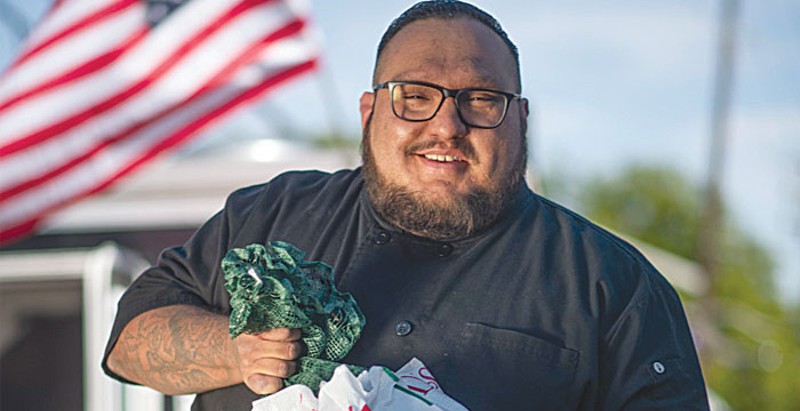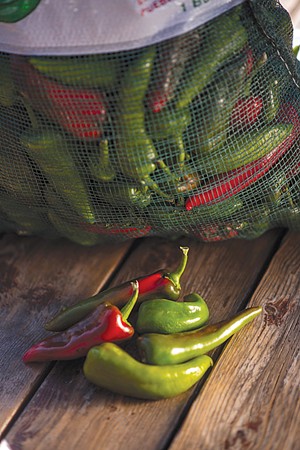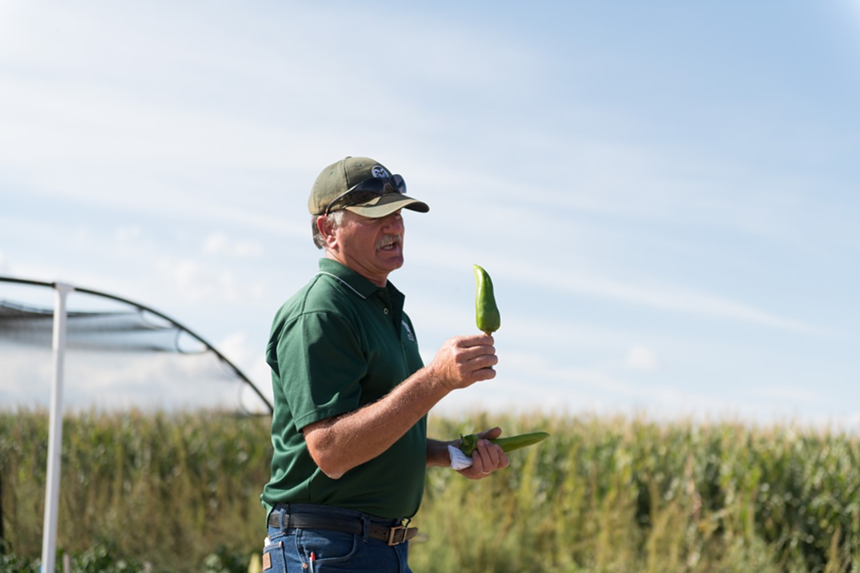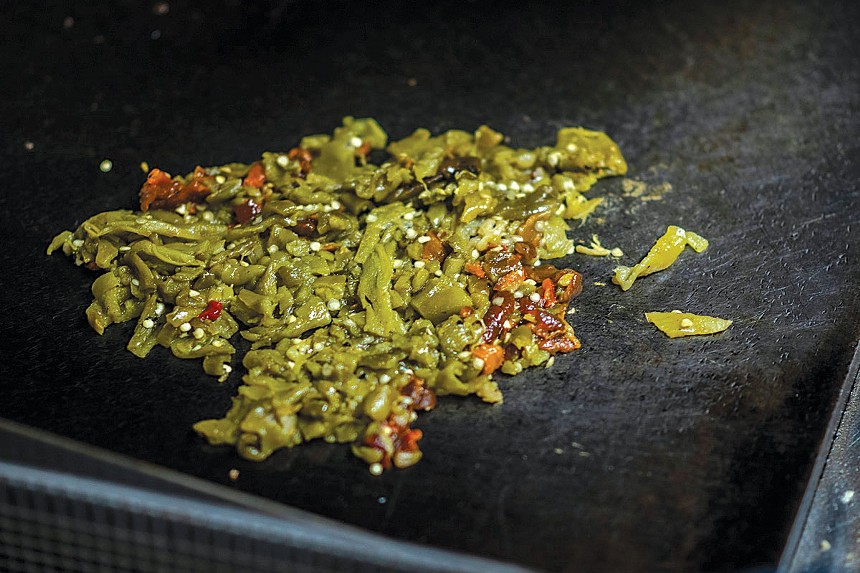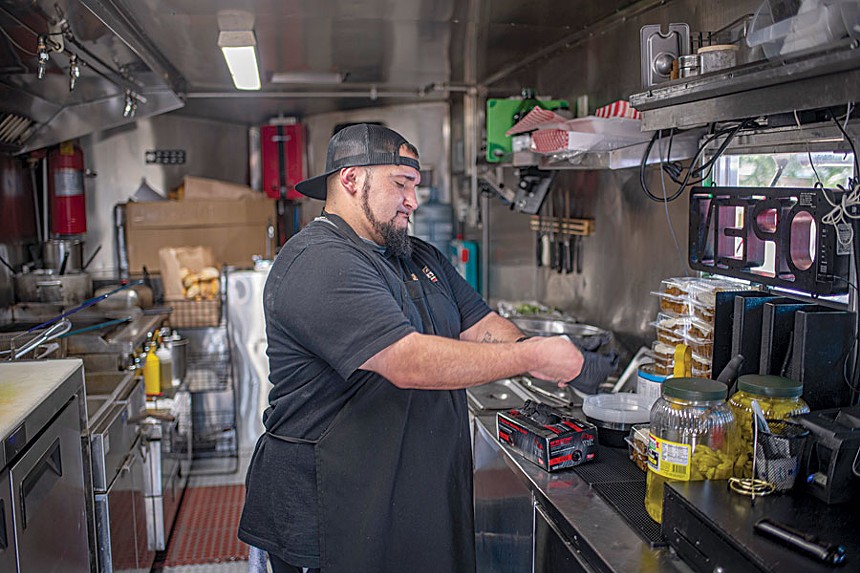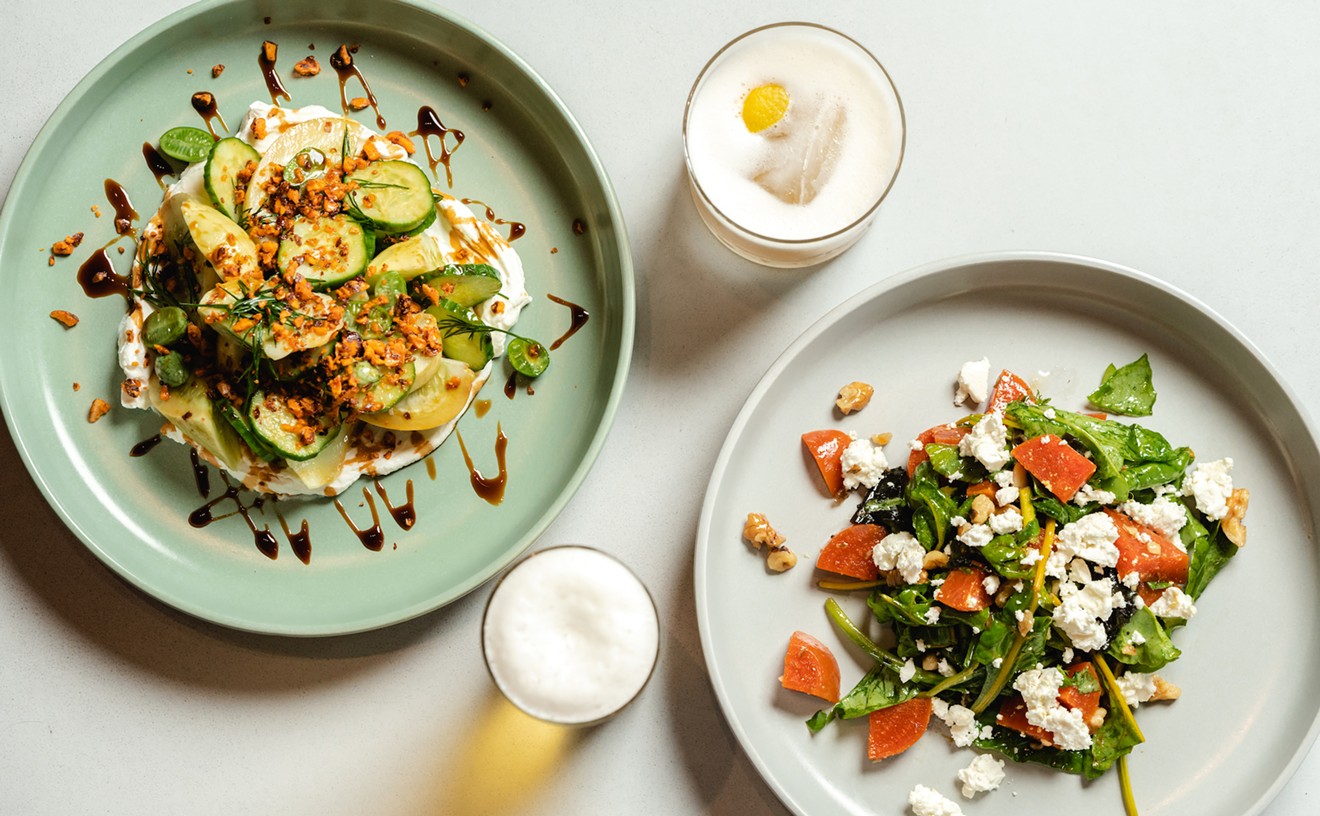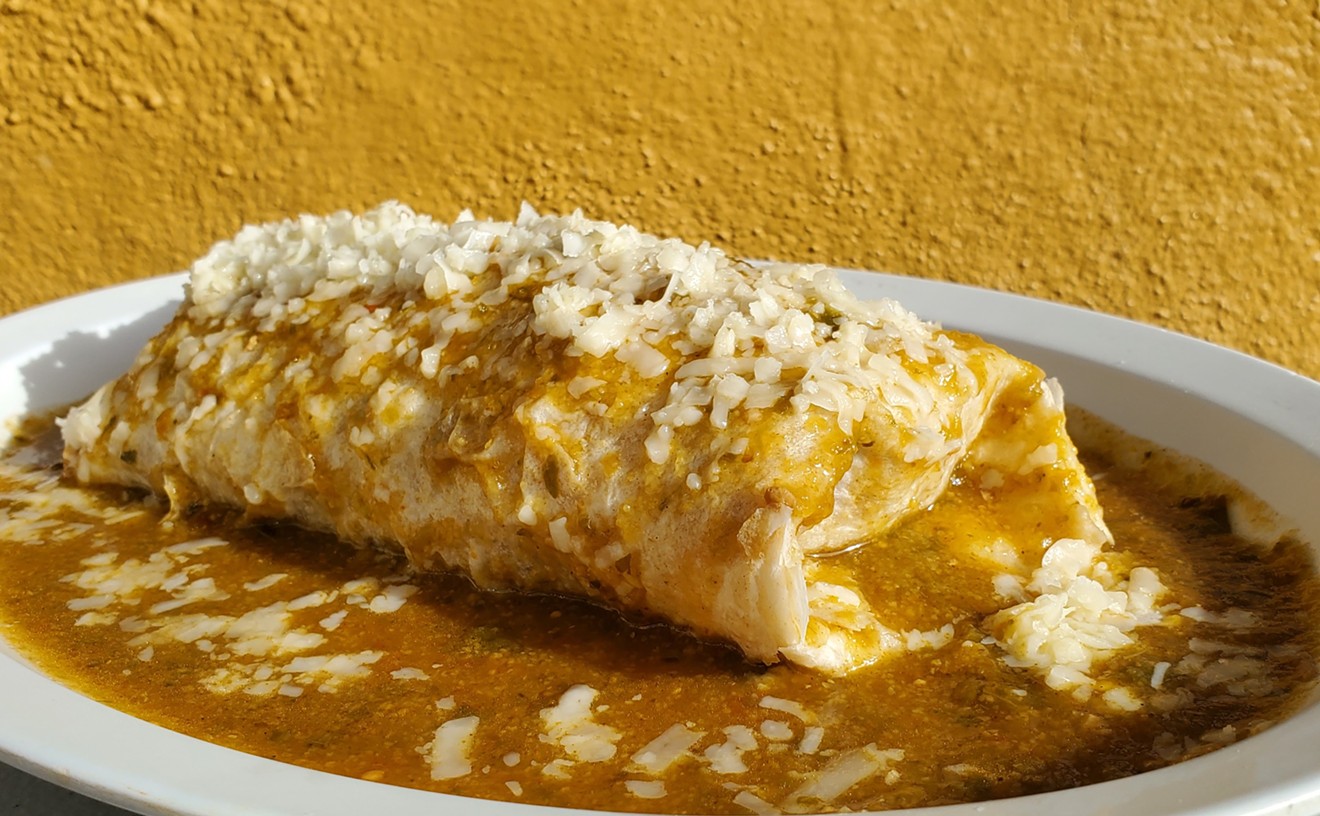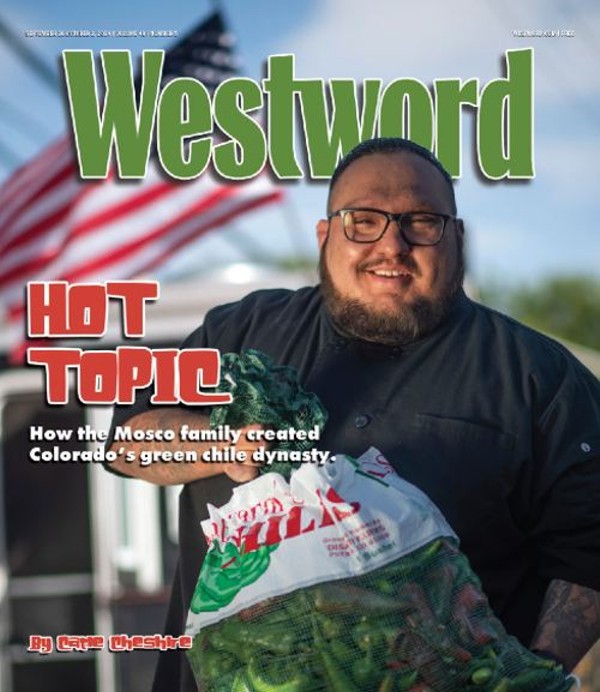Pino started operating the truck, which blends Italian-American classics with green chile peppers grown outside Pueblo, in 2021, after his grandmother encouraged him to chase his dream. Pino’s family history is flavored by the chile that is named after his uncle, Harry Mosco, who first recognized that the humble crop could become a hot item.
As he grew chiles on the family farm, Mosco began selecting seeds that led to bigger, tastier chiles. After his death, nephew Mike Bartolo took the project to Colorado State University, which made the Mosco chile designation official.
Now Colorado is known for green chile grown in Pueblo, with cooks serving up dish after dish packed with the spicy, robust flavor from the pepper grown on the plains. And chances are, the pepper is a Mosco chile.
Bartolo says that around 400 to 500 acres of Mosco chiles are grown in Colorado each year, representing a little less than half of the estimated 1,000 total acres of peppers planted in the state.
“It's kind of unfair, because it gets a lot more publicity than it deserves based on his contribution to the overall economy in the state,” Bartolo says of the Mosco name. “But nonetheless, it's something that brings this emotion and this interest that a lot of people share, because there's just so many types of dishes that it can be infused in.”
Green chile stews are most common, but the peppers can also be roasted and diced and added to almost any dish where an extra kick is needed. Debates about which restaurants have the best green chile abound, as does a rivalry with New Mexico's Hatch green chile. But as Mosco’s descendants will tell you, all chiles are good chiles.
The story of Colorado’s green chiles begins in 1910, when the Mirasol pepper made its way from Mexico to Pueblo. The ancestor of the Mosco, the Mirasol has the signature flavor but is smaller and less hearty for roasting.
Shortly after the Mirasol came to Colorado, so did Filomena Mosca, who joined her husband, Fiorino Mosca, in Pueblo, where he'd moved from Abruzzo, Italy, in 1899, when the family name became Mosco. “When they immigrated, that's when the 'o' came,” says Pino. “That's another story of Ellis Island.”
The couple had five children — Angelo, Louis, Joseph, Mary and Harry — who would all go on to cultivate the chiles that bear their family name. Harry Mosco served in World War II, driving tanks for the United States, including in Normandy.
“He started farming when he came back,” Pino says. “He was really fond of peppers.”
Harry Mosco grew many vegetable crops, but over time, he focused on cultivating the best peppers, selecting the plants that grew the biggest fruit and harvesting their seeds for the following year’s planting.“He would find the peppers that grew toward the sun versus downward, like the Anaheims,” Pino says.
"Mirasol" means "looking at the sun" in Spanish.
Each fall, Harry and his wife, Helen, along with Harry’s brothers, would collect the most promising peppers and string them into ristras. Those strings would hang in an adobe shack until they dried, at which point the family would collect the seeds from the plants using window screens to sift them.
“As that happened over time, he had a bag of seeds that he collected that were some of the best-yielding and thickest and most flavorful chiles,” Pino says.
Harry died in 1988; for a few years, his bag of seeds stayed dormant. That's when Mike Bartolo was working on his Ph.D. in plant physiology, after having earned a master’s degree in horticulture and a bachelor’s degree in bioagricultural sciences.
When he finished his Ph.D. in 1990, Bartolo headed to the Colorado State University Arkansas Valley Research Center in Rocky Ford. The next year, his father and his widowed Aunt Helen gave Bartolo his Uncle Harry’s bag of seeds. With Helen's permission, Bartolo began planting the seeds over the seasons and identifying the best green chiles...just as Harry had done.
“I was walking through one day and found a unique chile pepper,” Bartolo recalls. “I didn't really intend to go in that direction with my research, but then I found that unique pepper.”
Bartolo kept fine-tuning that unique chile in a single-plant selection process until it stabilized.
“It took me several generations, five or six generations, of doing that to get a single plant line so it was very uniform and very dependable, so when I planted it, I knew what was going to come out,” Bartolo says.
Once he’d established that true line of peppers, he named them the Mosco, after his Uncle Harry.
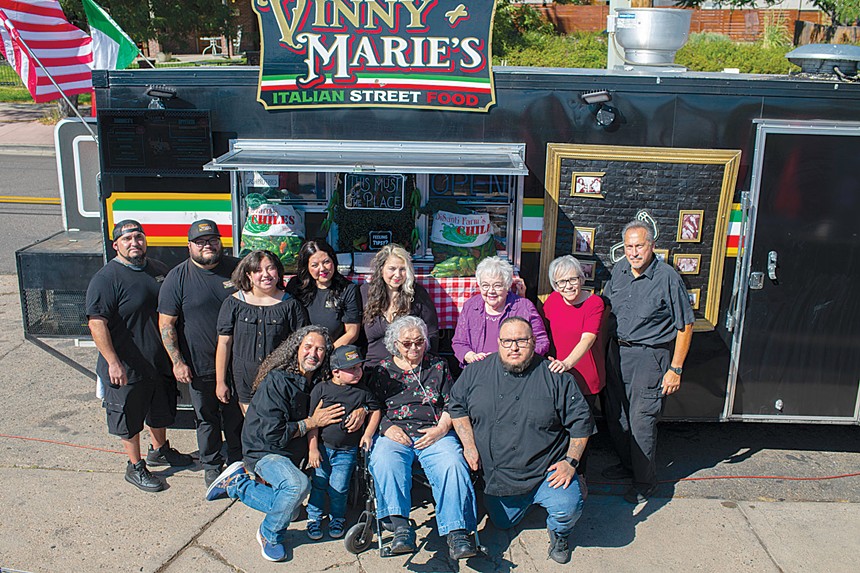
Members of the extended Mosco family in front of the Vinny & Marie's Italian Street Food truck.
Evan Semón
In 2002, Bartolo started distributing Mosco seeds to growers around Pueblo...and the pepper took off.
“I have kind of been perplexed sometimes about why it elicits such a response from people,” he admits.
Bartolo believes it’s not just the flavor of the chile that makes it popular, but also how it’s been integrated into the cuisine and culture of the Pueblo community. Pino, too, has wondered how the seeds spread so fast and the chiles became so legendary, but he’s just glad that his ancestors can be honored.
“[Mike] did a really good thing for the city, the state and for the family history,” Pino says. “I believe those seeds would have continued to grow, but I don't think they would have reached the potential that they have reached today.”The rivalry with New Mexico’s green chile has helped both Hatch and Mosco peppers become more popular with the public. But if you ask the very family that invented the Pueblo-based chile, they don’t quite see it as a competition. Pino grew up eating Hatch chiles, too, and says he’s always enjoyed them — despite preferring the Mosco variety.
“No disrespect to Hatch,” Pino says. “I love New Mexico. I love all the culture there. … Chile is good no matter what it is.”
Bartolo says he’s often asked to comment on the differences between the peppers and assess which is better. But he agrees: All chiles are great. He believes people are tied to their particular peppers because chile is culture, not just calories.
“It's part of our...I don't want to say our spiritual sustenance, but we all have an affinity because we all have good memories of the food that we enjoy with friends and family that have chile in it," Bartolo says. "That’s what gives it its uniqueness.”
Bartolo is featured in Mirasol, a movie made by the Palmer Land Conservancy, a nonprofit conservation organization, that came out September 18 (check mirasolfilm.com for upcoming screenings). The film tells the story of agriculture on Colorado’s plains as water scarcity threatens the area’s farmers. He hopes that Mirasol and the popularity of the Mosco chiles that the earlier pepper spawned remind people to stay connected to the earth.
“It's a pepper that has a long history,” Bartolo says. “I don't at all consider myself as the person that bred it, because it's been handed down from generations. I had the opportunity to hold the baton for a little bit of the race, and I got to run with it while passing it off.”
Chiles are woven through the menu at Vinny & Marie's, but Pino's favorite use is in the "Mosco," a sandwich with Italian sausage, cheese and chopped green chiles. He thinks anyone who eats a Mosco chile can taste the care and the history in every bite. What makes it so good is “the dedication and the love from my Uncle Harry in selecting the right seeds,” Pino says.
He’s tried to instill that dedication in his children, Vinny and Marie, for whom his food truck is named. Pino says he learned from his great-grandparents, grandmother, uncles and aunts to be proud of who he is and where he comes from, and to strive to build the best legacy possible.
“One way I can pay homage to them is by creating the food truck based around family,” he says. “We used to have some of the greatest gatherings of food, and everybody would be smiling when they left — stuffed to the gills, but smiling. That's how I pay homage to my family with this great, tremendous history.”
Follow @vinnynmariesitalian on Instagram to keep up with where the truck is around Denver.

